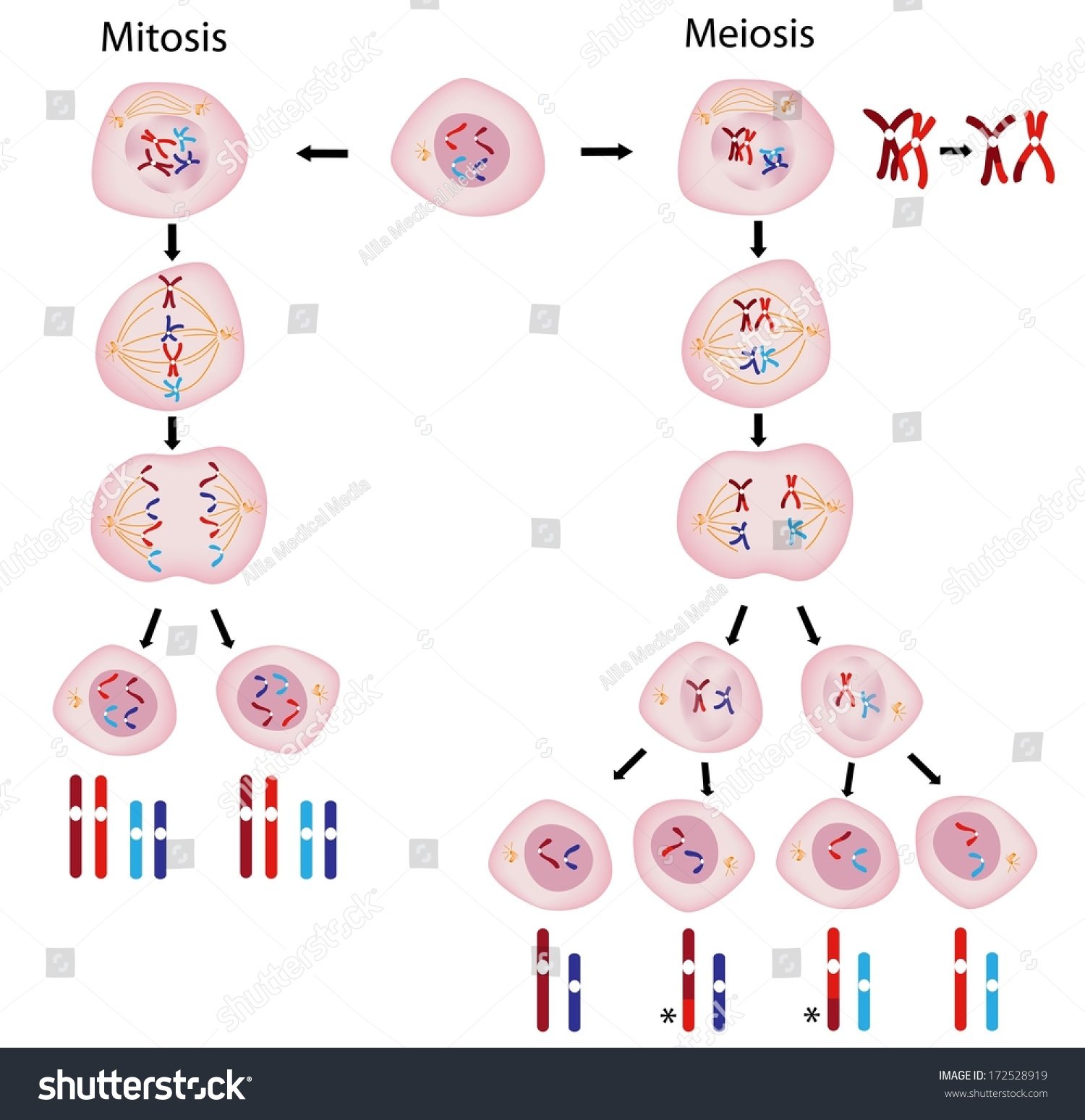Homologous chromosomes having similar genes and loci, but possibly different alleles. This comes from one being paternal and one being maternal. Homologous chromosomes are present in both Mitosis AND Meiosis, but their arrangement differs. Let's explain how.
In humans we have 22 homologous autosomal pairs, (and 2 sex chromosomes) for a total of 46 chromosomes. We simply the chromosomes to look like an "X". Each "X" is one chromosome, made of two sister chromatids ( exact copies of the chromosome) connected at a common centromere.
In mitosis the chromosomes line up in a straight line in metaphase and are pulled apart in anaphase. Since homologous chromosomes do not arrange in pairs during mitosis, in a human we see 46 chromosomes lined up in mitosis metaphase, making it diploid. After anaphase each of the 2 progeny have 46 chromatids (each identical, still diploid). Homologous chromosomes are present in mitosis but they arrange differently in meiosis.
In Meiosis, homologous pairs form tetrads. Tetrads, containing tetra (4), refers to the pairing of homologous chromosomes (which have 4 sisters chromatids between the homologous pair). Unlike mitosis where the chromosomes are unpaired in their metaphase (46 total in "single file"), in metaphase 1 of meiosis 23 tetrads are formed (23 in "double file"). Immediately after anaphase 1 each of the progeny is now haploid, containing 23 chromosomes, rather than 23 pairs. Another cycle of meiosis occurs yielding four haploid progeny with 23 chromatids. (see picture below, 2n=4 for picture instead of 2n=46 for humans)
Homologous pairs ARE PRESENT in both MITOSIS AND MEIOSIS, but the arrangement of the homologous pairs determines its diploid or haploid future. Recapping mitosis, the chromosomes lines up, not paired with their homologue, and yield a diploid progeny. Recapping meiosis, the chromosomes line up with homologous pairs, forming tetrads, and yield haploid progeny after 2 cycles. You are right about crossing over in meiosis, but that doesn't change the fact that homologous chromosomes are present in both mitosis and meiosis. Inbox any more questions, hope it helps!


